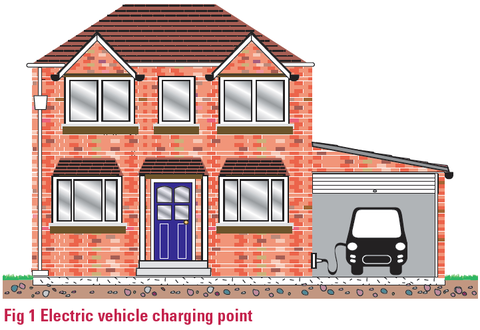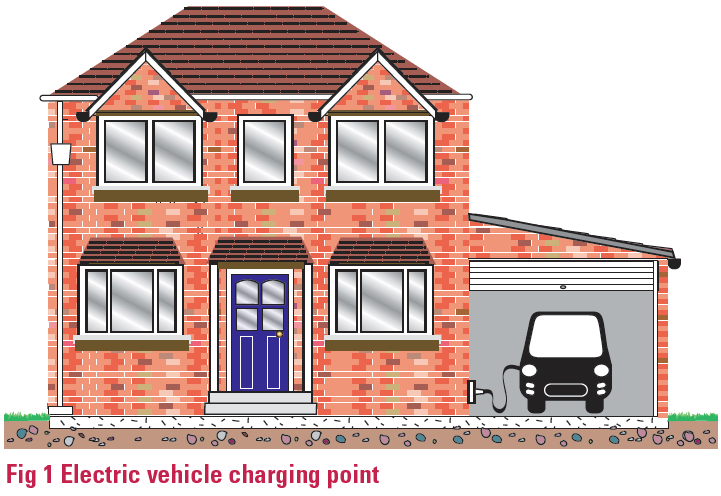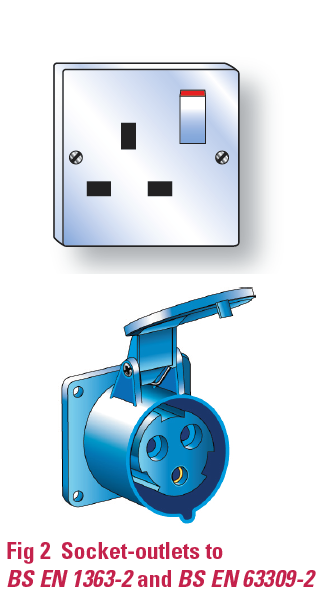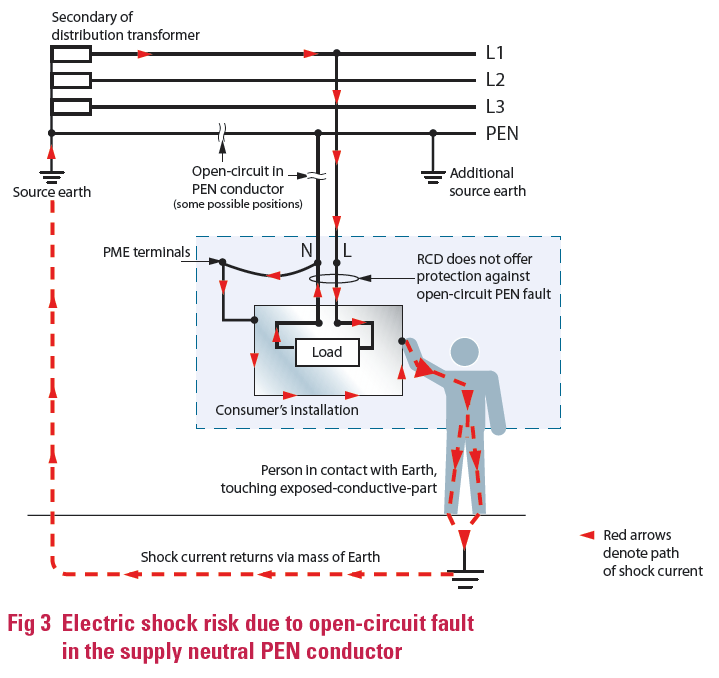NICEIC looks at the particular requirements of Section 722 of BS 7671 for the installation of electric vehicle charging points.

Electric vehicles (EVs) can provide reductions in both carbon emissions and running costs, however, the success of such vehicles relies on the availability of accessible charging points. For users of private EVs the largest proportion of their charging is likely to be at home and so this article looks at the particular requirements of Section 722 of BS 7671 for the installation of such an electric vehicle charging point.
 Circuit design and loading allowances
Circuit design and loading allowances
Regulation 722.311 requires that a final circuit provided for the connection to electric vehicles must be dedicated to that purpose alone. The regulation also requires that no diversity be allowed where a final circuit supplies more than one charging point. However, diversity may be allowed for a dedicated distribution circuit supplying multiple electric vehicle charging points, provided that load control is available to prevent overloading of the circuit.
RCD protection of an electric vehicle charging point
Where automatic disconnection of supply is used as the protective measure, Regulation 722.531.2.101 requires every charging point to be individually protected by an RCD having a rated residual operating current (IΔn) not exceeding 30 mA and an operating time not exceeding 40 ms at 5 IΔn, disconnecting all live conductors, including the neutral. The RCD is required to be at least a type A, due to the likelihood of d.c. being present in vehicle charging current. If it is known that the d.c. component of residual current will exceed 6 mA, the RCD must be of type B to BS EN 62423.
Type of socket-outlet or connector at an electric vehicle charging point
Section 722 does not standardise on any one particular type of socket-outlet or vehicle connector at charging points, but it requires these to be chosen from six different types listed in Regulation 722.55.201.1. Vehicle manufacturers’ instructions should be followed when determining the type of socket-outlet or connector to be installed, as pointed out in a note in the regulation. The listed types of socket-outlet and connector include:
- 13 A socket-outlets to BS 1363-2 where the manufacturer approves their suitability for use for the characteristics of the charging load,
- industrial type socket-outlet or connectors complying with BS EN 60309-2 having one of two specified interlocking arrangements to prevent contacts being live when accessible,
- for Mode 3 charging, one of three different types of socket-outlet or vehicle connector complying with the BS EN 62196 series of standards, Plugs, socket-outlets, vehicle connectors and vehicle inlets. Conductive charging of electric vehicles.

Each socket-outlet should supply only one vehicle and must be installed in a fixed socket-outlet box or a distribution board, with the lowest part of the socket-outlet between 0.5 m and 1.5 m above the ground. Tethered vehicle connectors are permitted but not portable socket-outlets. Where an EV charging point is installed outdoors, the equipment should have a degree of protection of at least IP44.
Arrangements must be provided to prevent insertion or removal of plugs in charging Modes 3 and 4, unless the socket-outlet or the vehicle connector has been switched off from the supply (Modes are defined in Part 2 of BS 7671).
Protective Multiple Earthing (PME)
Where the protective measure is automatic, disconnection of supply and a PME earthing facility is used as the means of earthing (TN-C-S system), special requirements of Section 722 apply if an electric vehicle charging point is:
- located outdoors, or
- might reasonably be expected to be used to charge a vehicle located outdoors.
The special requirements are intended to protect against a risk of electric shock that can arise in the unlikely event of an open-circuit fault in the combined protective and neutral (PEN) conductor of the low voltage network supplying the installation. The fault can result in a dangerous voltage to Earth existing for long periods on the earthed metalwork of the installation and equipment connected to it (including any electric vehicle and its charging equipment), posing a danger to any person touching the metalwork whilst in contact directly with the general mass of Earth, as shown in Fig3.
An RCD offers no protection in these circumstances, as the shock current flows in both the line and neutral conductors passing through the core balance of the device and consequently there is no imbalance to cause operation of the RCD.
The requirement to comply with one of the three conditions detailed in Regulation 722.411.4.1, need not be applied for a charging point at a dwelling if none of the three conditions is reasonably practicable. In this context, ‘dwelling’ means a self-contained unit designed to accommodate a single household. It does not mean a building exclusively containing rooms for residential purposes, such as a nursing home or student accommodation or similar.

For information about the NICEIC Approved Contractor or Domestic Installers schemes,visit www.niceic.com or call 0870 013 0382
